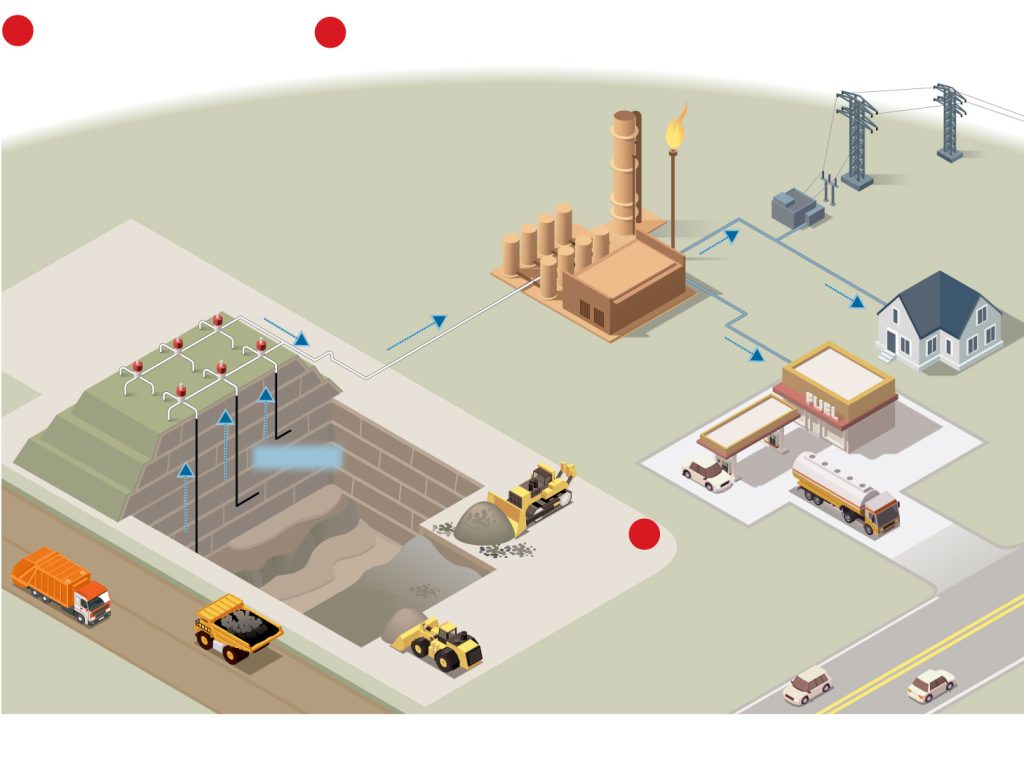There is certainly a lot of buzz around topics like renewable energy, emission reductions and, more recently, carbon offsets. Perspectives range from confusion and skepticism to strong support of offsets as a necessary step in battling climate change. Today, we will not be discussing the pros and cons of carbon offsets, but rather try to improve understanding of offsets by exploring an example of a project type that leverages a biproduct of our Landfills.
Landfills are often viewed as an eyesore or as having a negative impact on the local environment, so it might be difficult to imagine how they can have a positive impact on the climate change and renewable energy spaces. According to the EPA, landfills are among the largest producers of a greenhouse gas much more dangerous than carbon dioxide, methane. Methane is produced when organic waste such as food or wood starts to decompose. While that might sound less than encouraging, landfill methane actually represents a renewable energy source that can also help reduce greenhouse gas emissions. The process is straightforward, and the general workflow looks as follows:
- Methane collection:
First, a trash cell is created by digging into the ground to create a bed used for collecting the trash and waste from the surrounding community. As the trash rises in the cell, there is a skim coat of dirt and soil applied in layers. When the cell has reached max capacity, a thicker layer of clay, soil, and a protective barrier is placed on top of the cell. The site remains like this until ready for methane extraction. - Extraction:
A vertical well is drilled to extract the methane gas from the trash cell at varying depths, with the most concentrated methane residing at the bottom of the cell. - Processing:
After the methane is extracted from each cell, it is then transferred over to a processing plant via a network of pipes. When received at the processing plant, moisture, Carbon Dioxide, Sulfur and VOCs (Volatile Organic Compounds) are removed. - Usage:
Once processed, the resulting methane can be distributed using existing infrastructure to power utilities, schools, local community homes, and even compressed gas vehicles.
In addition to providing a power source, some landfill gas capture projects can also be eligible to generate carbon offsets since they are preventing dangerous greenhouse gases from entering the atmosphere. Offsets generated from such projects can be purchased by organizations seeking to balance out hard to eliminate emissions generated from their operations. The carbon offsets space can seem complex and intimidating, but Guttman is here to help. To learn more about our Carbon Offset Program or Renewables options, visit our Guttman Renewables site.

https://www.npr.org/2021/07/13/1012218119/epa-struggles-to-track-methane-from-landfills-heres-why-it-matters-for-the-clima



